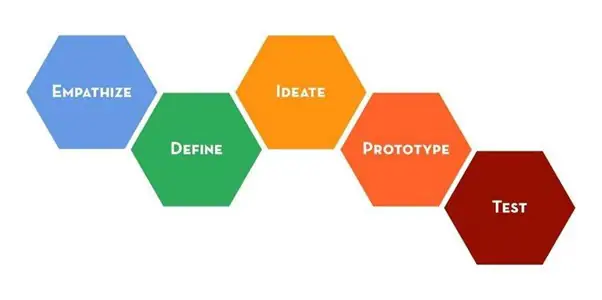Defining User Problems with Streaming Services
In user experience design there are five steps to the design thinking process: Empathize, Define, Ideate, Prototype, and Test. I've discussed empathy in my last blog post Why Do We Need Empathy In Design. In this blog we'll be moving onto the next step in the design thinking process, Define.

The “design thinking” process, defined by the Stanford School of Design, includes five stages: empathize, define, ideate, prototype, and test. Image credit
Hasso Plattner Institute of Design
.
First, we empathize with the users or customers who are using the product or service. We empathize by listening, watching, and understanding the end user. Then, we define the problem. The Define stage of the design thinking process is exactly what it sounds like. You cannot solve a problem without first understanding and defining the problem first. When a user has a complaint about a product or service, there is always a cause to the problem. What is causing the user to complain about the product or service? To put it simply, a user complaint + cause = problem.
Analysis Vs. Synthesis
In the empathize stage, analysis is used to break down complex concepts and problems into smaller ones. In the define stage, synthesis is used to organize, interpret, and make sense of the data. Synthesis helps create a problem statement.
Problem Statements
A problem statement is a description of an issue that needs to be addressed or improved upon. It identifies a gap between the current and desired state of a product or service. Problem statements define a user problem. The format for a problem statement is:
___________ is a challenge for __________ because __________.
example:
Getting items from the top shelf at a store is a challenge for Jacklyn because she is short (5'2") and cannot reach the top store shelves without assistance.
Problem Statements should be human centered because the goal is to solve human-oriented problems. These statements should be broad enough for creative freedom; be careful not to pigeonhole yourself. Problem statements should be narrow enough, though, to make manageable solutions.
User Issues with Streaming Services
I compared three similar streaming services to see what problems users were having with them. I looked at Discovery +, Prime Video, and Apple TV. I opened the Apple App store on my iPhone to compare negative and suggestive reviews of these streaming services. Here are a sample that I found:
A selection of 3 constructive criticism reviews found on the Apple App Store for Apple TV +
After reviewing these complaints, I was able to create a list of insights and problems:
The organization of the interface
No option to filter movies/tv by age
No option to add shows to a library or watch list
Application does not keep track of user's place
Application does not autoplay next show
Point of View Statements
In order to define the problems, I needed to make actionable problem statements. In order to ensure these are action-oriented, you can create a Point of View Statement, or POV. The template to creating and reframing a design challenge into an actionable problem statement (POV) looks like this:
___(descriptive user)______ needs (need/verb)____ because ____(compelling insight)_____.
POV Statements created for Apple TV users
After gathering a list of user problems I crafted two Point of View Statements.
Users who stream television shows using Apple TV need a watchlist because users like to add their favorite shows to one convenient list.
Users who stream television shows using Apple TV need the interface to be organized by genre and have an option to filter because users do not like to browse or find shows without organization.
To see what problems users are having with Discovery + and Prime Video, check out the whole document below!


